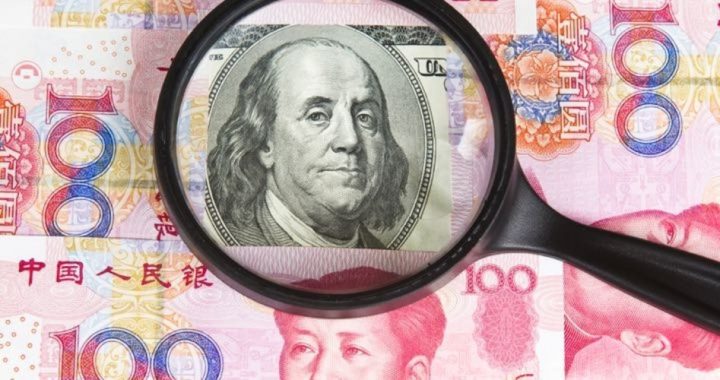
According to China’s National Bureau of Statistics (CBS), China’s economy slowed in the second quarter. Unofficial numbers show it slowed a lot.
The numbers coming from the country’s CBS have long been held as spurious, more wishes and hopes reflecting political policy rather than economic reality. For example, the agency has reported for at least the last two years that the country’s economic growth has stayed comfortably above the government’s stated target of 6.5-percent annual GDP growth. Imagine what’s happening behind the scenes at the bureau when it was forced to report a slight decrease in the country’s economic performance in the second quarter compared to the first.
The bureau is essentially the official voice of the communist government as it reports directly to the government’s State Council and is charged with the collection and publication of statistics related to the country’s economy, population and society. So not only must anything and everything reported by the agency be taken with a large dose of salt, it puts special pressure on those determined to find out what’s really happening behind those government numbers.
Officially the Chinese economy performed strongly last year, clocking growth at 6.9 percent for the year. And also officially, that momentum carried over into the first quarter of 2018. Officially the agency reported modest slowdowns for the month of June in exports, investments by private companies outside the country, and consumer spending. Unofficially, Louis Kuijs, charged with looking behind those “official” numbers by Oxford Economics, said that the bureau’s official numbers “suggest a broad-based slowdown [which] we expect to continue.”
Some of the slowdown is self-inflicted. In order to keep the promise of at least 6.5-percent annual growth decreed by the State Council, China’s central bank, in cahoots with local lending institutions across the country, has boosted spending through loans, to the point where the country’s national debt (according to the slightly more reliable Bank of International Settlements) is now more than two and a half times the value of the country’s entire economic output. This has already forced ratings agencies Moody’s and S&P to downgrade China’s credit ratings.
As Daniel Shane of CNN put it so carefully, “The deepening trade fight with the United States is likely to contribute to the loss of momentum.” What Shane could also have said was that it is likely to contribute to more serious talks with Trump administration officials about bringing about much fairer trade terms. Otherwise the trivial tariffs already being imposed, and being threatened, could reach some serious levels, exposing the Chinese economy for the bubble economy that it already is.
The numbers coming from the phony Chinese National Bureau of Statistics have been called out by, surprisingly, the New York Times, no friend of the president’s and certainly no enemy of the Chinese communists. Wrote Keith Bradsher on Sunday, “Those [official] figures belie warning signs elsewhere. More detailed data show weakening investment in infrastructure and less exuberant spending by China’s usually ebullient consumers.… A tiny but growing number of Chinese companies have defaulted on their loans.… [Its] currency has lost some of its value [and] Chinese stocks are in bear market territory.”
Reuters confirmed Bradsher’s report by also reporting on Sunday that “June factory output weakened to a two-year low in a worrying sign for investment and exporters [just] as a trade war with the United States intensified.” In negotiating lingo, this is known as “leverage,” knowing and using your opponent’s difficulties as a lever to obtain a better outcome.
China’s slowdown is, according to Kuijs, “already dampening business confidence and delaying investment” in the country.
There are other numbers working in Trump’s favor. First is the sheer size of the U.S economy compared to China’s. Statistics Times reports that, at present, the U.S. economy is at least 50-percent larger than China’s. Second, the U.S. economy’s growth rate is accelerating at exactly the same time that China’s is declining. This puts “parity” of the two economies ever further into the distant future.
China’s slowdown simply couldn’t come at a better time for the president and for the United States to strike a fairer trade relationship with the Chinese communists running the country. It’s a lever that the president will no doubt use in his negotiations for that better trade deal.
Photo: Clipart.com
An Ivy League graduate and former investment advisor, Bob is a regular contributor to The New American magazine and blogs frequently at LightFromTheRight.com, primarily on economics and politics. He can be reached at [email protected].
Related article:
Chinese President Xi Jinping Looks to Take the Lead in Global Governance



